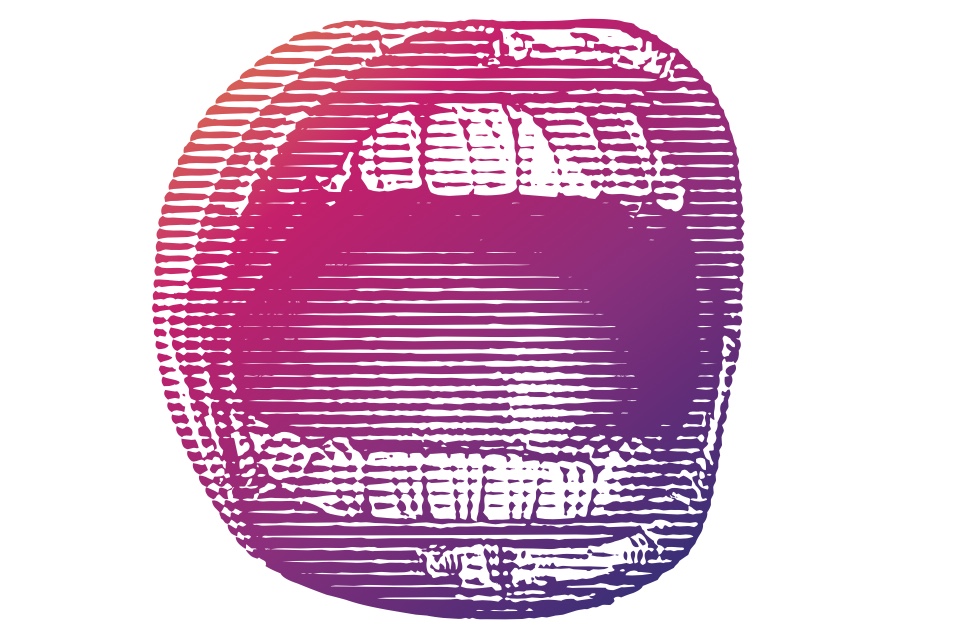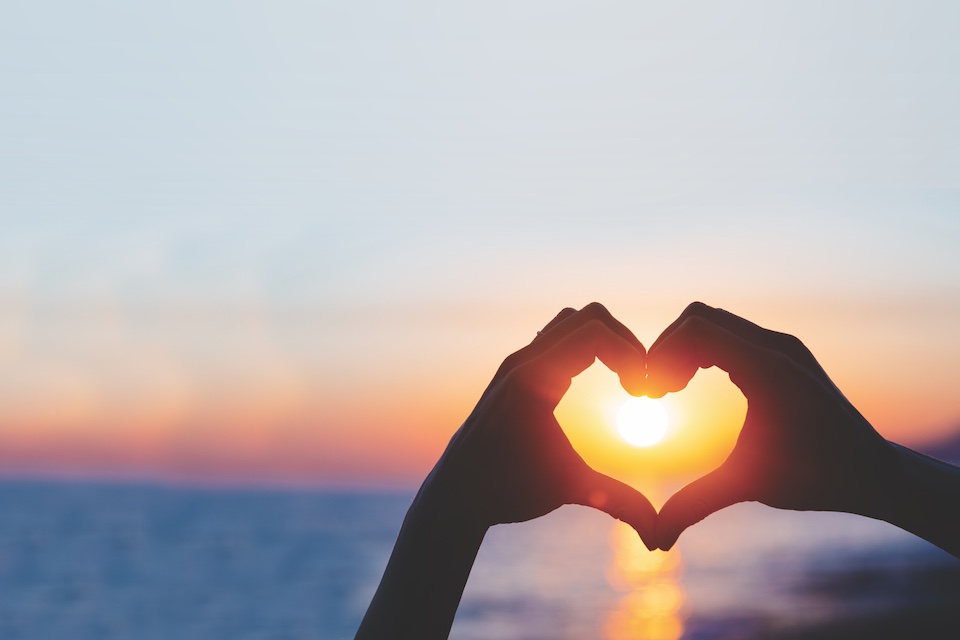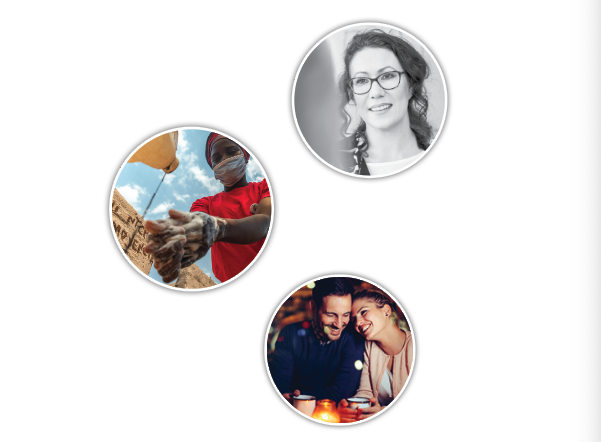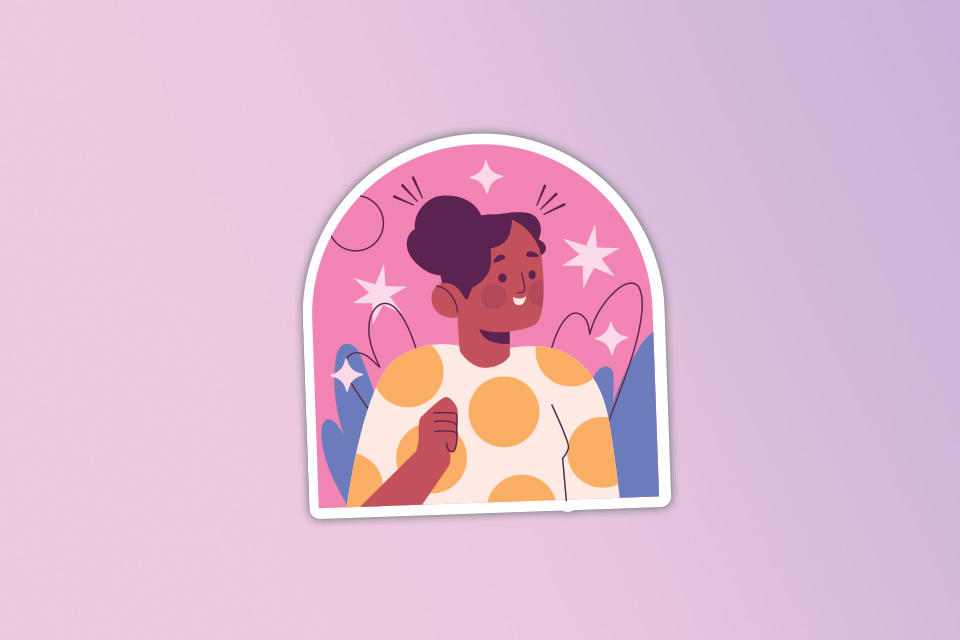Travel Insight
The Hon Vijay Daryanani MP, Minister for Business, Tourism and The Port, talks to Jo Ward about tourism and the prospects for travel to and from Gibraltar as we come out of restrictions put in place due to COVID-19.
Nearly exactly a year ago, Insight spoke to Minister Daryanani about the dearth of tourists wandering down Main Street, and the Minister commented that “it was heart-breaking to see an empty Main Street and that he was looking forward not only to the day when it becomes as busy as it used to be, but also that visitors can enjoy the wonderful products that Gibraltar has to offer as a tourism destination”. On the day of our meeting at the beginning of March, Main Street was thronged with people, testament to the fact that visitors are once again coming to Gibraltar.
“We are seeing signs of recovery now,” Minister Daryanani says, continuing “and I think that the vaccine has shown people that that is the way ahead.”
“We have antivirals coming along so I think people are realising that the virus is not going to go away and we need to learn to live with it, and I know that this is a phrase you hear from all politicians,” the Minister smiles as he says this, “but it is a fact that we need to learn to live with COVID-19 because the choice is simple, either we lock up and stay at home or we get on with things.”
Stating that the economy has been decimated, Minister Daryanani says that we are fortunate that Gibraltar is a small place. “We know in general that the Government has spent close to £300 million making sure that we have saved jobs and businesses, and we have paid people’s wages which is unheard of in the private sector.”
Now, he says, we need to get on and to start enjoying life once again. “People and businesses are frustrated and they want to make sure that their businesses prosper.”
The COVID-19 pandemic brought about an unprecedented halt to global travel, with restrictions and travel bans put in place all over the world, but the good news is that people are travelling once again. “The cruising sector is extremely important for Main Street and for our hospitality sector – they are the two that have suffered the most when it comes to travel,” Minister Daryanani states.
“Yesterday I welcomed cruise ship World Odyssey on its inaugural call to Gibraltar,” the Minister comments. “We have a situation now where we have 180 cruise calls this year, that is not far off from pre-pandemic levels, so we are doing quite well, but I want to market the Gibraltar Port as a premier cruising destination in the Mediterranean, so you will see over the next few months that I will really crank up my cruise marketing because it is something that I haven’t been able to do over the last couple of years.”
The banning of non-essential travel due to the COVID-19 pandemic had a huge impact on flights in and out of Gibraltar, however Gibraltar was very fortunate as at one point it was the only country in Europe that was on the UK’s travel ‘green list’.
“Thanks to our successful marketing campaign and the slogan ‘Gibraltar is your great British staycation in the Mediterranean’, it brought people to Gibraltar who perhaps in the past would not have come,” the Minster says. “Now they have been here, I think that they will come back again because they realise that Gibraltar is a very entertaining place, there is a lot to do, and it is a perfect place for young families.”
One exciting development for Gibraltar in 2021 was the introduction of Wizz Air and Eastern Airlines joining the flights that came in daily from the UK by British Airways and EasyJet. Unfortunately, both airlines withdrew flights, Wizz Air from Luton to Gibraltar and Eastern Airlines from Birmingham and Southampton to Gibraltar, last year.
“In my view when you start something new you need to let it mature – it can’t start working within the first year – any new business does not make money in the first year and unfortunately these airlines have taken the decision that it hasn’t made money in the first year and that they want to pull out.”
“At the end of the day it is a question of demand, and if they are going to lose money they are not going to fly here,” the Minister says. “I convinced both airlines to come to Gibraltar, I worked extremely hard on doing that, and their circumstances allowed it at the time.”

Minister Daryanani went on to say that he still has a very good relationship with both airlines. “I met them last week when I attended the CONNECT airline conference in Finland, and they still have interest in Gibraltar, so I will keep on working with them and there might be some possibilities in attracting them back next year.”
Talking about new routes and other airlines coming to Gibraltar, I remind the Minister that Ireland was mentioned as a possible new catchment area in the past. “Ireland is one that is on my hit list and in the same way that I attracted Edinburgh, because we didn’t have a link to Scotland and we have it now, I am hoping that we can do something with Ireland.”
Minister Daryanani says that insofar as other air routes are concerned, it depends a lot on the Treaty that Gibraltar is negotiating with the EU. “If air transport is included in the Treaty then there might be a situation where the airport will open up to Schengen countries, so we will be able to have flights from Spain, France, Italy – all over Europe – and there is a lot of interest in this.” The Minister goes on to say that at CONNECT he was given the opportunity to speak about Gibraltar in a panel discussion. “Airlines were asking me about the Treaty and what it will do to Gibraltar, and in my view it will be a game changer in terms of travelling to and from the territory.”
The hospitality and hotel industry has obviously suffered during the past couple of years, but with the scheduled number of flights for this summer at nearly the same as pre-pandemic, Minister Daryanani agrees that it can only be a good thing for that business sector. “Absolutely, we are seeing recovery and I expect things to improve next year,” he comments. “However, insofar as flights are concerned at the moment, pre-pandemic we didn’t have Wizz and we didn’t have Eastern Airways, so if we put that to one side we already have that kind of level of flights as we did at pre-pandemic levels, so it is excellent for the hotels and I think that they will once again be busy this summer.”
The Minister agrees that it is also important to attract more hotels to Gibraltar. “We have got some new ones coming, but we also have a situation where when I go marketing to the UK, one of the things that I am asked is ‘you are coming here to market Gibraltar which is excellent, but when we look for space in Gibraltar, there isn’t any because the hotels are full’.”
“There is definitely a market for a couple more hotels in Gibraltar, but of different standards,” he states, going on to add that it is something that he is working on because it is crucial to the development of UK tourism.
“If we are going to be able to be part of Schengen for mobility purposes and aviation is included within the Treaty, then we are going to be able to go out and market Gibraltar to Europe because we might have the possibility of having flights here, so we will need more hotel space – but we have to wait and see.”
Visit Scotland
Of all the cities in the world, Edinburgh is particularly blessed. Like Gibraltar, it evolved as a settlement around a large fortified rock in a coastal setting. Unlike Gib, however, it had the benefit of being able to spread itself out a little more which, to the traveller, only means there is much more to see.
With easyJet opening up a direct route to Scotland’s capital city, all of a sudden many more opportunities exist for weekend trips to one of the prettiest cities in the UK.
You’ll need to be prepared for all sorts of weather. So bring enough to witness whatever Mother Nature throws at you.
At the heart of Edinburgh is the Royal Mile, in the Old Town. At one end of this is Edinburgh Castle, and at the other the Palace of Holyroodhouse, Her Majesty’s official residence in Auld Reekie. The Royal Mile alone is worthy of a day or so’s exploration. With all the many closes (alleyways) running from it, each with their own story to tell. Beneath the City Chambers you’ll find Mary King’s Close – a peak into a bygone era that was merely built upon thus preserving life in the 17th Century.
At this portion of the Royal Mile, you’ll be stumbling into the area that resulted in the genesis of Harry Potter. JK Rowling used many of the buildings around here as inspiration for the books (George Heriot’s School, for example) and nearby Victoria Street, said to have prompted Diagon Alley.
Edinburgh was at the epicentre of the Enlightenment, and was coined the Athens Of The North in recognition of this. There has always been a darker side, with the tales of Deacon Brodie and Burke & Hare both frightening and inspiring generations. For an overarching look across the area, head to Calton Hill or Arthur’s Seat. From here you will experience the best views in Edinburgh.
Close to the Royal Mile on the other side of Waverley Railway Station and Princes Street Gardens, is Princes Street itself. This is the main shopping area in the city with further boutiques and specialised retail on George Street which runs parallel. One flagship store is Harvey Nicols, which features a restaurant/bar with far reaching views across the city northwards towards Fife. This area is known locally as the New Town, with its distinct and planned Georgian grid pattern.
For sports fans, each of the three major stadia are relatively close to the centre. In the east, Hibernian’s Easter Road and in the west Tynecastle Park, home of Heart of Midlothian. Not far from Hearts’ ground is Murrayfield, where Scotland Rugby is headquartered.
As you travel further outside the middle, quirky areas like the Dean Village, Stockbridge and Morningside are all within easy reach. Taxis are keenly priced in Edinburgh, plus there is a relatively new tram system. The bus service in Edinburgh has always been exemplary, and special ticket prices are available for jumping on and off to explore.
In Leith, in keeping with Edinburgh’s maritime heritage, the Royal Yacht Britannia is permanently on display. This is right beside Ocean Terminal mall which also features a cinema. On The Shore in Leith, one or two excellent seafood restaurants ply their trade, including Fishers which is highly recommended. Adjacent to this is the original Malmaison, which was converted from a historical seaman’s mission to the chic hotel and bar we have today.
Of course, travelling to Edinburgh also opens up Scotland’s other city, Glasgow as a day trip possibility. It’s safe to say that Scotland’s biggest city is a bit grittier, but it also offers much in the way of shopping and two giant European football teams, Rangers and Celtic. Which one is The Best, we’ll leave up to you.
Fun Holiday Destinations for the Kids
Disneyworld
Would you like to travel to a galaxy far, far away?
Disneyworld’s 50th anniversary event started on 1st October 2021 and is set to end in March 2023 – lasting a full eighteen months. You can celebrate in style by booking a trip to the newly opened Star Wars: Galactic Starcruiser – a Star Wars themed luxury hotel near Disney’s Hollywood Studios, in the Epcot Resort Area of the Walt Disney World Resort in Florida. Star Wars: Galactic Starcruiser offers a first of its kind immersive adventure unlike Disney has ever done before. During your voyage, you can choose how you interact with characters, crew, and other passengers. Every Star Wars: Galactic Starcruiser package includes a 2-night stay in a cabin or suite, meals (excluding alcoholic and specialty beverages) and the opportunity to live your Star Wars story through exclusive experiences, missions and activities. You also get lightsaber training and a trip to the planet Batuu, better known as the Galaxy’s Edge theme park.
If you want to brush shoulders with Star Wars characters, eat intergalactic food, and maybe even going on a secret mission, this is a trip that both adults and kids will love – although bear in mind that it is really expensive – but if you love Star Wars, this is definitely a trip to splash out on!
Amsterdam
This is a destination that may not automatically come to mind when you are thinking about where to go on holiday with the kids, but there so many things to do and discover in this family friendly city.
Well known for some of the best cycling routes in the world, Amsterdam is a small city and easy to navigate with kids along well paved bike paths. Bicycles are easy to rent, but look out for the Dutch cargo bikes (or ‘bakfiets’) which are the most practical and the most environmentally friendly solution to get around.
Amsterdam is bursting with outdoor spaces, parks and playgrounds that are perfect for letting off steam. There are several museums in Amsterdam but the kids will love Nemo, the Science Museum where a hands-on philosophy encourages interaction and the little ones will be captivated by the buttons, levers and pulleys, not to mention the bubbles that they can step in to and the clouds that make rain. At certain times of the year when the weather is good, the roof houses free attractions and water features.
If that’s not enough to entice you, remember the tulip fields, windmills, canals, petting zoos and playgrounds, all good reasons why Amsterdam is one the best places to visit with kids.
3 Day guide to Paris for first-time visitors
Paris is one of those cities you could probably visit several times and still find new places to explore. I definitely did not get through all the restaurant recommendations on my list! I had previously visited Paris as a child so my memories of it were vague, so it was nice to really see the sights properly and use my GCSE French. Whether you’re travelling with your family, friends or partner, here are my tips and recommendations for your visit to Paris.
Where to stay
Paris is made up of 20 ‘arrondissements’ or districts, and as expected the closer you stay to the major landmarks the more expensive your hotel is going to be. The good thing is that the Paris metro system is pretty easy to use and each ride only costs you €1.90. We stayed in the Hotel 25Hours Terminus Nord, which meant that the Gare du Nord metro and train station was right on our doorstep.
The hotel was beautiful and so quirky. It was very Parisian and full of colour and artwork. It also had unique touches like a typewriter to send love letters out in the lobby, and I probably ate my weight in French toast at the buffet breakfast. We were also able to use Netflix and YouTube on the television in the bedroom which was great for when we were getting ready.
Where to eat
I was travelling with my vegan friend so we did have to opt for some vegan friendly restaurants, which wasn’t as difficult as we were expecting in France. I know the delicacies in France include escargot (snails) and Foie gras (duck or goose fat) but immersing myself in the local cuisine went as far as crepes and creme brulee. Hey Honey was a bit on the pricier side but the setting was lovely and the cocktails were shown on tarot cards. I opted for the duck breast with dauphinoise potatoes and I’m still daydreaming about how good they were. If you do want to try some classic french dishes, then Terminus Nord Restaurant has a selection of everything at decent prices.
If you’re after some vegan cuisine, then Le Potager du Marais serves vegan alternatives of French dishes. I opted for french onion soup (which came complete with vegan cheese), and finished off with some creme brulee. The owner of the restaurant was lovely and took time to come and chat to us and talk about the dishes. If you fancy something different, then Jah Jah By Le Tricycle is a good shout. They only have 4 items on the menu which changes everyday but I thoroughly enjoyed my meal! It’s a Jamaican vegan restaurant and I got a big plate of food for 10 euros.
If you have a sweet tooth, then definitely stop by Creperie Montorgueil and try their salted caramel and banana crepe. They also do a bunch of savoury options if that’s what you prefer. If you’d like to take home some macarons, then Maison Laduree is the most famous place to get them, or you can also eat in and try one of their indulgent cakes. Lastly for some eclairs, Le Eclair De Genie offers a wonderful selection.
What to do
The best way to start your first day in Paris is doing a walking tour of all the sights, either on your own or on an organised tour. Sandeman’s offer a free walking tour that starts at 11am everyday starting from Place St Michel. If you’d rather do it on your own, save the points of interest in Google Maps. Make sure to include the Eiffel Tower, The Louvre, Notre Dame Cathedral, Arc De Triomphe, Pantheon and the Sacre-Coeur Basilica. Once you’re done seeing the sites, get a different perspective by taking a 1 hour cruise down the Seine river. The boats run every hour but the best time to go is at sunset.
There are a ton of different museums to visit in Paris, but the most notable has to be the Louvre where the Mona Lisa is housed. It probably took us an hour to find her because we started on the opposite side of the museum, and boy did it feel like we were stuck in a maze! They say that even if you spent 3 months in the Louvre, you still would not get through every exhibit. If you fancy doing something a bit more unique, then head to the Catacombs of Paris, an underground ossuaries which hold the remains of more than six million people.
In terms of evening entertainment, something I definitely recommend doing for the experience is attending a Moulin Rouge show. They first opened their doors in 1889 and you really do get immersed in the experience when you are there. Tickets cost £70 and this also included a bottle of champagne between the two of us.
If you have time, then head out of the city to visit the Palace of Versailles, it really is beautiful. Your other option is to, of course, visit Disneyland Paris which is a short 45 minute train from the city centre. Just make sure to check online which rides and shows are currently open as with Covid things are still slightly different.
Whether you’re planning a long weekend or a full week in Paris, you’re never short of things to do!
Travelling Light
Now that there is the opportunity to travel once again, here are a few tips to help you pack like a pro!
You’ve probably heard of Marie Kondo, the Japanese organising consultant, who revolutionised the way we declutter and tidy up. Folding your clothing the KonMari way can revolutionise the way you pack your suitcase and will ensure that you maximise the space.
“Clothes should be folded and packed upright,” she recommends. “Fold suits and lay them flat on top. Pack bras on top, and don’t flatten them. Pack small things such as underwear in a travel pouch, and transfer lotions and toiletries into smaller bottles to reduce volume”
So is the KonMari method better than rolling your clothes or using packing cubes? Packing vertically takes up less space and allows you to see where everything is at a glance. However, you may want to try a method used by the army – the Ranger Roll technique – whereby you lay the item of clothing out flat, then fold the bottom two inches of the item inside out so it creates a type of pocket along one side of the clothing. From the opposite end, roll the item tightly until you get to the pocket you’ve created. Fold one side of the pocket over the roll, securing it tightly.
There are many different and creative ways to pack jewellery for travelling. You can, of course, buy jewellery organisers that keep your items safe and secure, but there are other options such as using a pill box to store your rings, small earrings or delicate pieces of jewellery. Cling film is a good way to keep your necklaces separate. Place each necklace on a section of cling film, leaving a few centimetres of space between each, then carefully roll it up. Alternatively, if you have plastic straws lying around in a drawer, one good way to repurpose them is to loop one end of the necklace through a straw and then fasten to stop it from tangling up whilst travelling.
Shoes can be awkward items to pack, but try packing heels in the central top half of your suitcase and fill the gaps between the heels with rolled-up small pieces of clothing. Stuff flat soled shoes and boots with socks and underwear and keep the soles to the sides of your suitcase.
Travel Positives
The positive benefits of travel are numerous and varied. Whether a wonderful trip within the UK or a glamorous adventure to a far flung location. They can all provide life affirming experiences and valuable time to reflect.
Jo Wheatley is a global award winning emotions coach. Jo details below, the reasons why travel is good for us physically, emotionally and mentally:
• Travelling enables us to step outside of our comfort zone, into stretch which enables us to grow our comfort zone. The longer we stay in our comfort zone the smaller our comfort zone becomes.
• Travelling enables us to challenge our beliefs, by being exposed to new cultures and people. This is healthy. It can help us to replace limiting beliefs about ourselves with positive, empowering beliefs
• When we decide to travel it is often because it is aligned to one of our core values. This may be adventure for example, or independence, or freedom. When we take decision to live our lives aligned to our values we are most fulfilled. When our values are met we experience emotions such as joy and
• It can increase our creativity as we are stimulate with new experiences and can lead to us setting new goals for ourselves.
• It enables us to communicate in new ways, often requiring us to innovate in our communication and resourcefulness as we encounter situations we may not have planned for.
• Having photos of our experiences and treasured memories can be great for us to dip into and stimulate positive emotions when we are home, back in our everyday life and need to be inspired.
Alison Stockton is a Trauma informed – functional medicine practitioner Health coach. Alison states that ‘travel became popular only for the wealthy or the expeditionist a few centuries ago and then thanks to air travel it has become a huge industry.
Travel has bought a huge sense of achievement, fulfilment and excitement for so many, this is positive psychology. Because of the sense of “looking forward to something,” it highlights positive emotions, happiness and wellbeing. There is a “sense of connection”, we begin to research where we would like to go, what we would like to see whilst there, anticipating the feeling of relaxation. It is also an incentive to become healthier before the actual travel itself. The thoughts alone of that holiday can release feel-good hormones, lower stress hormones and release endorphins for the anticipated experience.
- Mental image of the destination
- Motivation (perhaps to save or the trip, new shopping experience. etc)
- Decision/ choice (Book/ Reservations)
- Experience
- Satisfaction
When we arrive at our location we can actually change our neurochemistry and move from a sympathetic nervous state (Stressed/fight/flight) to a calm parasympathetic state in our body continues to release
so that we actually feel healthier almost instantly. Not only that when we are in the sunshine we are exposed to Vitamin D which is an essential hormone, that many have been deficient in the last 2 years, which vastly supports immune health
The inspiration of seeing beautiful destinations, the architecture, the weather (esp when living in the uk) the visualisation of sitting by the pool, or dipping your toes into the sea with the warm sun on your body, you can transport yourself to a calm state of relaxation before you arrive.
We have heard so many times “Arh, I need a holiday” this is because (its hoped) that the moment you begin breath your journey to the destination, you already begin to unwind, relax, breath and untangle the “stressors” every day modern 21st Century living has brought to us.
Looking forward to travelling now in 2022 is seemingly giving us back freedom, something to look forward to, a time with our friends and family away from the “home” we may love but have felt bound to for 2 years. A holiday where we can do as we please with less conformity or routine. A time to sleep, to rest, to be well and calm down our busy minds, play cards and be present with loved ones, experience inspiring architecture, absorb. history, climb a mountain, the world, as they say, is our oyster, the world is yours to explore.
Travel can even mean taking a 2-3 hour train journey to London and allowing time for your mind to quieten and think of changes you desire to make in your life, it can bring such incredible positivity to be in a different environment.
When a human is away from their “every day” it enables us to step out of the groundhog replay and take a new perspective, like the matrix. We get to press pause, it doesn’t matter if, for 2 days or 2 weeks, we can see things differently and often, assess what in our life needs more or less focus and how we can then make the desired changes a reality.
Long gone have thee days where travel and change was just a far fetched dream, it is a reality to make dreams come true.
Travel expands our cognitional, emotional behaviour, social interactions and mental wellbeing. Many best friends, romantic partners and relocations, work opportunities have been encountered due to the wonders of travel.
So much inspiration and perspective are gained through travel and changing our environment.
The last 2 years travel bans that we have experienced restrictions, we have all. felt very saddened and restricted by, so if an opportunity arises for you to change your location, even for just a few short days, embrace it, enjoy it and feel your mental wellbeing is being fully supported.’
• Jo Wheatley, No 1 Podcast host and author. www.jowheatley.comwww.igcompany.co.ukwww.podfollow.com/the-coaching-crowd
• Alison Stockton (Expat and lover of travel)
• www.instagram.com/the_enrichedwoman
• www.vibrantbalancedhealth.com
Honeymoon Destinations
Wedding season is nearly upon us, with June traditionally being the most popular wedding month. Once you have announced your engagement and set the date for the nuptials, the next most important thing is to choose where you are going to honeymoon.
The word honeymoon from the Old English ‘hony moone’. Hony refers to the European custom of giving newlyweds enough mead, ‘an alcoholic liquor made by fermenting honey and water’, to last a ‘moone’ (month) which was thought to be the period following marriage where everything is sweet and rosy, also referencing the changing aspect of the moon, from full to waning, or the period when that initial euphoria starts to wane!
Planning where to go on your honeymoon can be stressful. Ideally, for most of us, we are looking for some rest, relaxation and quality time with our newly wedded partner. The most important thing is to plan the trip together and incorporate destinations that you both want to go to and to include activities that you both want to do.
With many couples having to put their plans on hold for the past two years, it is likely that there will be an influx of bookings for the next few years, so now is the time to sit down and decide where to go. From exotic faraway places to more affordable and closer to home, from beach paradises to adventure or cultural trips, here are a few of our top tips.
The Maldives
The tropical resort islands of the Maldives situated in the Indian Ocean are often featured in the top ten of the world’s most romantic destinations for a honeymoon. If peace and tranquillity, white sandy beaches and turquoise waters are for you, there are plenty of luxury private resorts to choose from. You’ve probably seen images of the iconic overwater villas and bungalows perched above tranquil lagoons that grace the pages of glossy magazines, so if that is what you are after then check out Komandoo, an adult only resort situated in the Lhaviyani Atoll, a 40-minute seaplane ride from the capital Malé. Other equally stunning resorts are situated at Milaidhoo, Kanuhura, Maagau Island and Muravandhoo Island and keep in mind that the best time to visit the Maldives is between November and March.
Mexico
If a beach holiday isn’t for you and you are the couple that crave adrenaline and adventure, Mexico’s varied landscapes offer an abundance of options. Go whitewater kayaking or river rafting in Tlapacoyan in the state of Veracruz, situated in the eastern part of the country, from where you can experience the challenging Alseseca, Filobobos and Jalacingo rivers.
Alternatively, try the longest (3km), highest (300 meters) and fastest (120 km per hour) zipline in the world in the Copper Canyon Adventure Park (Parque de Aventuras) near Divisadero.
The Yucatan Peninsula is in the easternmost part of Mexico and separates the Gulf of Mexico from the Caribbean Sea. Explore the ancient Mayan ruins and visit the archaeological sites of Chichen Itza, a World heritage site that was also named as one of the New 7 Wonders of the World, Uxmal – the second-most visited archaeological park in Mexico – and Tulum.
Italy
Somewhere closer to home is the ultimate honeymooners’ destination of Italy, with its picturesque landscapes, rich cultural history and art, delicious food and delightful wine. With its network of canals, Venice is renowned as the city of love and what could be more romantic than a serenaded gondola ride that will take you past ancient palazzi and magnificent cathedrals. Explore the Amalfi Coast by car and take in the beautiful scenery and the rugged coastlines. If you are coming from Naples or Rome, the coastal town of Sorrento is a good place to start your journey. If hiking is your thing, try one of the most spectacular hiking trails in the world, the Path of the Gods, which begins at Agerola and follows a route high above the coast. Make your way to Amalfi and then discover the sights of the idyllic fishing village of Positano. Hop on a ferry to enjoy the charms of Sorrento, tour historic Naples, walk among the ruins of ancient Pompeii, a UNESCO World Heritage Site, and take in the natural beauty of the enchanting island of Capri.
Finally, Rome has to be on the list for a romantic honeymoon experience. Soak up the stunning architecture of the Eternal City, walk along the winding alleys and cobbled streets and find a new surprise around every corner. Rome is home to some of the world’s most beautiful churches from the Romanesque, Gothic, Renaissance, and Baroque periods and a trip to Rome would not be complete without a visit to the Vatican City where you can visit St. Peter’s Basilica, famous for Michelangelo’s painting of the Sistine Chapel, wander round the Vatican’s gardens and go to the Vatican Museums which conserve the immense collection of art amassed by the popes from the seventeenth century onwards.
South Africa
One of the best honeymoon destinations in Africa, South Africa offers a diverse cultural experience, savannahs, wildlife and beautiful landscapes. Take a safari trip and see the Big Five (African lions, leopards, rhinoceros, elephants, and Cape buffalo) in their natural habitats. Stay in a lodge at the Kruger National Park, one of the most beautiful and fascinating places to visit, or camp out under the stars for an unforgettable experience.
There’s no shortage of things to do in Cape Town, the famous resort city on South Africa’s southwest coast that sits beneath the 3,558-foot, flat-peaked Table Mountain. For some awe-inspiring views from the top, you can ride The Cableway, the rotating state-of-the-art cable car that takes visitors from the lower station to the summit in around 5 minutes, giving you a 360 degree aerial view of the city as you go.
How about a trip to a wine estate? Some of the best wines are grown and produced in Western Cape Winelands, home to favourite regions like Stellenbosch and Franschhoek. Stay overnight in a family owned boutique winery, or visit for the day and savour the delights of lunch or afternoon tea, all the while indulging in award-winning wines at some of the best wineries in the world.
























